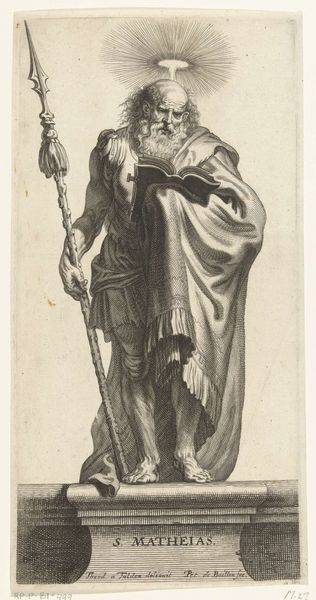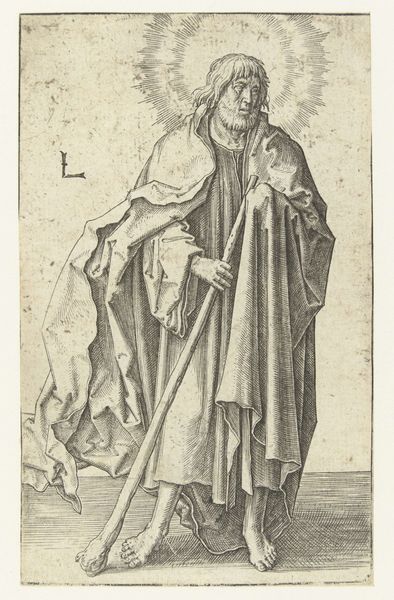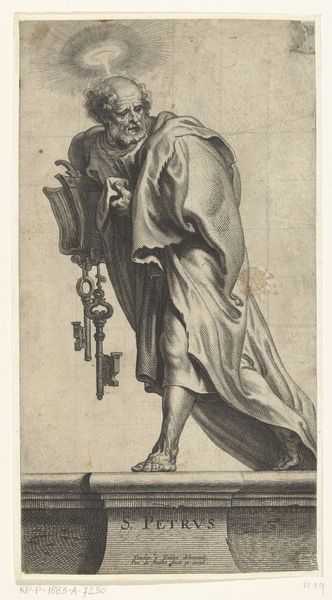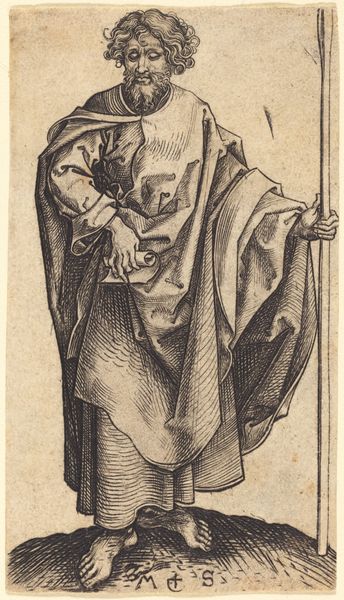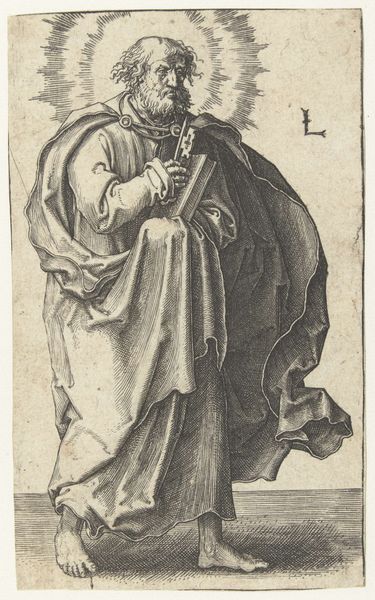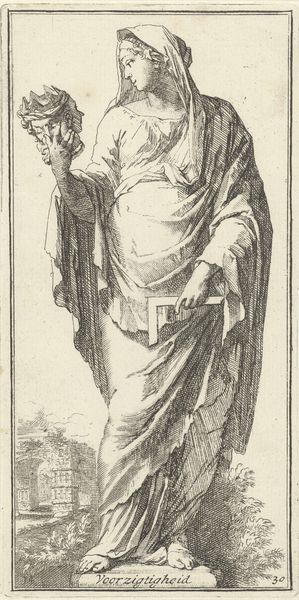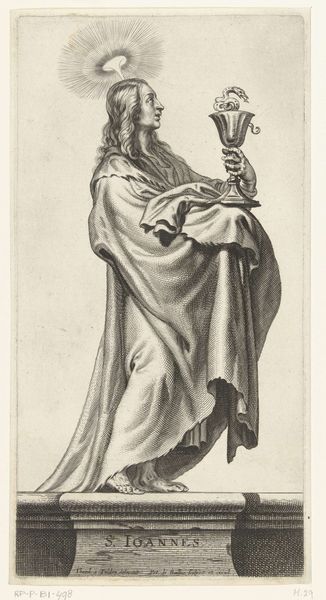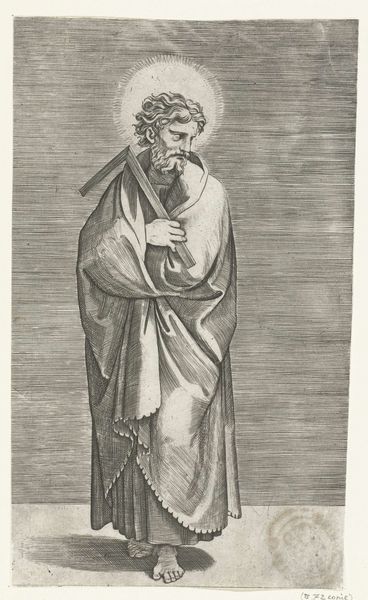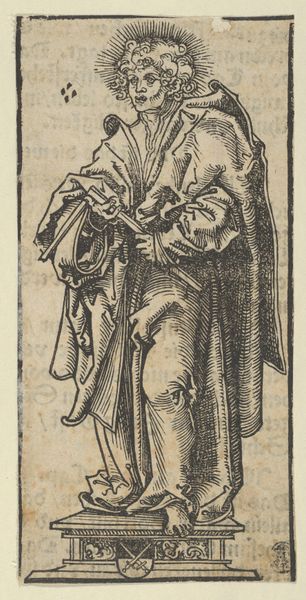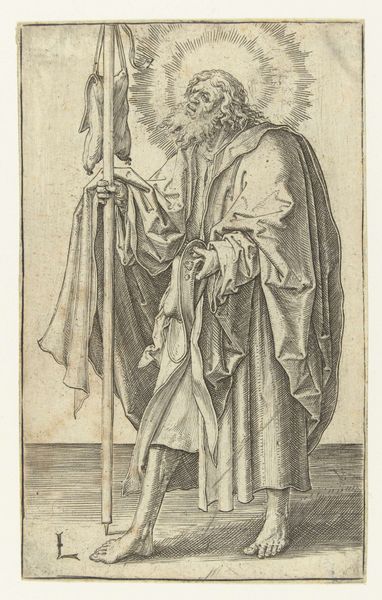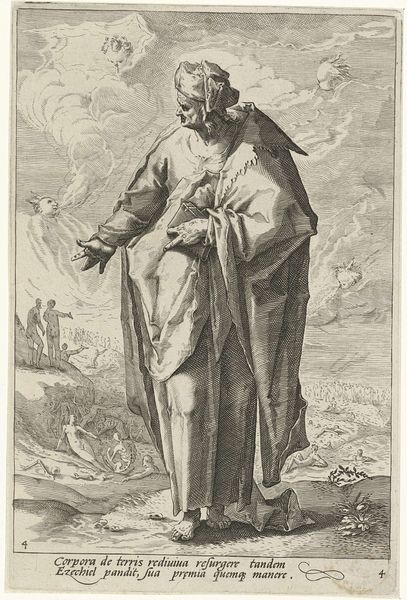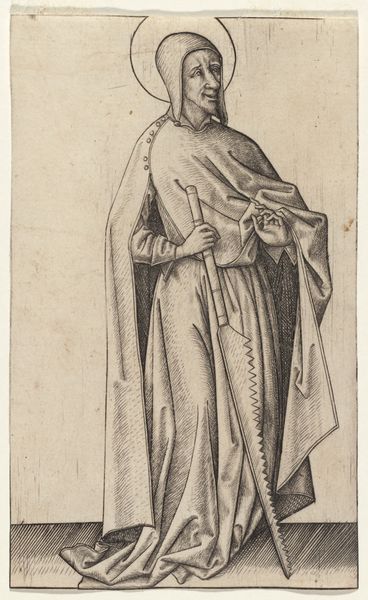
engraving
#
baroque
#
charcoal drawing
#
pencil drawing
#
engraving
Dimensions: height 254 mm, width 134 mm
Copyright: Rijks Museum: Open Domain
Curator: Immediately, I'm struck by the sheer expressiveness captured in this monochrome image. The apostle’s ragged clothing, the delicate halo, and the intense gaze evoke a feeling of profound faith. Editor: Here we have Pieter de Bailliu’s “Apostel Filippus met crucifix,” made sometime between 1623 and 1660. It's an engraving, currently housed here at the Rijksmuseum. The interesting thing here is the printmaking, the lines so intentionally laid down in labor and crafted into existence with humble tools. Curator: The cross Philip is holding looks rather small for what I would have imagined. It suggests less the traditional image of triumph and more the idea of a personal, almost private, devotion, don't you think? He is clearly clutching the tool that brought about his suffering, this feels intimate and quite melancholy. Editor: Yes, and the small size is perhaps less a stylistic choice and more of what would be available in the studio in terms of toolmaking or access to the best quality metal at the time. You see here also, there are a limited number of distinct marks repeated throughout this print, speaking to constraints within the engraver's workshop. This might challenge any sense of uniqueness we have when it comes to "high art" pieces. Curator: But isn't it compelling to consider how the choice of representing Saint Philip, this apostle known for converting many, with an almost gaunt appearance might reflect societal concerns of the time, about poverty, spirituality and piety? The choice in imagery becomes extremely deliberate under that line of thought. Editor: Deliberate to a point; you may see symbolism in gaunt features, but I cannot help but wonder if the cost and access of the necessary resources constrained choices during the execution of the image. What appears "deliberate" from our time may merely be an instance of "making do." It makes you question how free any artwork really is when made under economic or resource-based constraints. Curator: Perhaps the two ideas aren’t mutually exclusive. The limitations of resources, in this case, amplify the potent symbolism—an eloquent portrayal of dedication in the face of difficulty, which speaks deeply about the history of human faith itself. Editor: In thinking about production versus final symbolic meaning, perhaps both shape art in distinct ways. It causes us to reassess assumptions. Curator: Indeed. Thank you for lending an eye of social making. Editor: And thank you for lending your gaze of symbolism to the constraints of production!
Comments
No comments
Be the first to comment and join the conversation on the ultimate creative platform.
